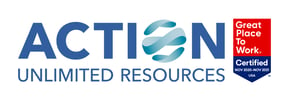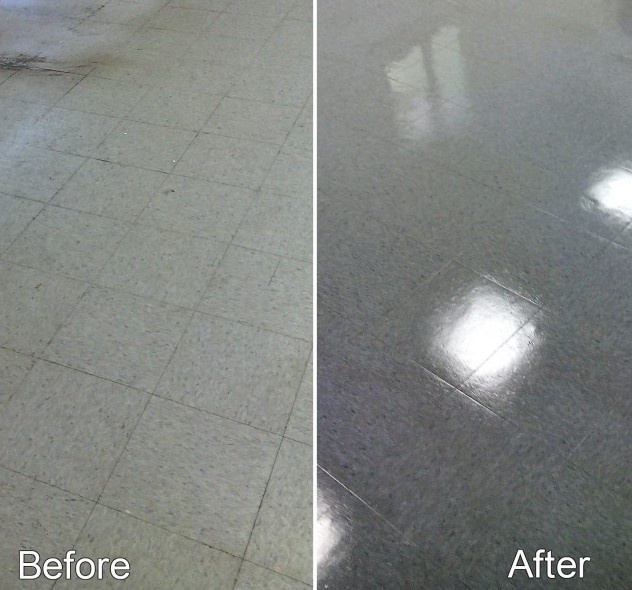.jpg?width=533&name=Dirty%20and%20Clean%20(2).jpg)
As the large gilded lobby doors close, you stride over the vivid picture printed on the entrance mat in the vestibule and peer ahead into the vast expanse towards the curved stairwell. The once beautiful floors look dirty, but that’s not possible. The cleaning service, the one recommended by three other business owners because of the exceptionally well-trained staff, spent hours last night cleaning the glass, polishing the metal, and shining the floors. So, what’s wrong?
Over time, the wax or floor finish over a vinyl tile floor can lose its luster, pit, scratch, discolor and otherwise degrade. The correct floor finish and a proper maintenance program will add years to the life of the floor. At some point though, floor stripping will be inevitable. Look for the following signs and always consult a professional if you have any questions.
- Discoloration from UV light- There are 2 primary types of UV light that will affect your floor. UVA, longer wavelengths from sun, and UVC, short wavelengths often synthetically produced by fluorescent lights and healthcare equipment. To identify discoloration due to UVA light, stand 20’ away and look at flooring in long entranceways and under windows that have direct sun exposure to the floor. To find whether UVC light is damaging the floor finish, look directly underneath fluorescent lighting for patches of discoloration.
- Oxidized finish- As floor finish oxidizes, it will haze and leave a white powdery residue. Look at entrance mats, dust mops, and dark soled shoes for telltale white dust. Also, if after burnishing long hallways excessive dust is present, then it may be time to strip the floor.
- Scratching and scuffing- mechanical means from furniture, carts, or equipment moved along the floor surface can lead to scratches and scuffs. The harder the finish the more likely to scratch, the softer the finish the more likely to scuff.
- Discoloration and blotchiness- As finish wears, dirt embeds into the floor finish. Depending on the severity of the damage, it may be time to either scrub and recoat or strip and refinish the floor surface.
- Time intervals- Some facilities need to scrub or strip certain finishes at pre-defined times of the year based on the usage of the facility. This scenario is quite common in schools where floor stripping programs are completed during summer or winter breaks.
- Alcohol burns- When alcohol-based hand sanitizers drip onto floor finish and white marking is observed under the drip area, this means that the sanitizer has eroded the finish and is now on the floor tiles underneath. This lack of protection for the tile will eventually lead to high floor replacement costs when damage is untreated for an extended period.
- Other chemical burns- Betadine, Iodine, bleach, and other chemical spills burn through the finish leaving a dull area on the floor that clearly contrasts with the glossy finish on the rest of the floor.
- Low pH disinfection- Improper cleaning programs using low PH disinfecting systems leave the floor dull and lifeless. Disinfecting is ideal for touch point surfaces only.
- Improper bond- The floor finish is peeling from the bottom up instead of mechanically from the top down. A lack of proper bond from the finish to the flooring surface necessitates a stripping and refinishing of the vinyl tile surface. A clean bond to the floor using clean tools to create proper adhesion to the floor is paramount once the floor stripping is complete and new floor finish is applied.
When you identify the need to strip and remove the floor finish, don’t despair. Once this process is complete you will have the opportunity to introduce new floor care and maintenance innovations that will eliminate the need for floor stripping for years to come.
To find out how, contact Action Unlimited Resources and request a SmartSite™ Optimization Analysis.




Enjoy this blog? Leave a comment or ask a question!